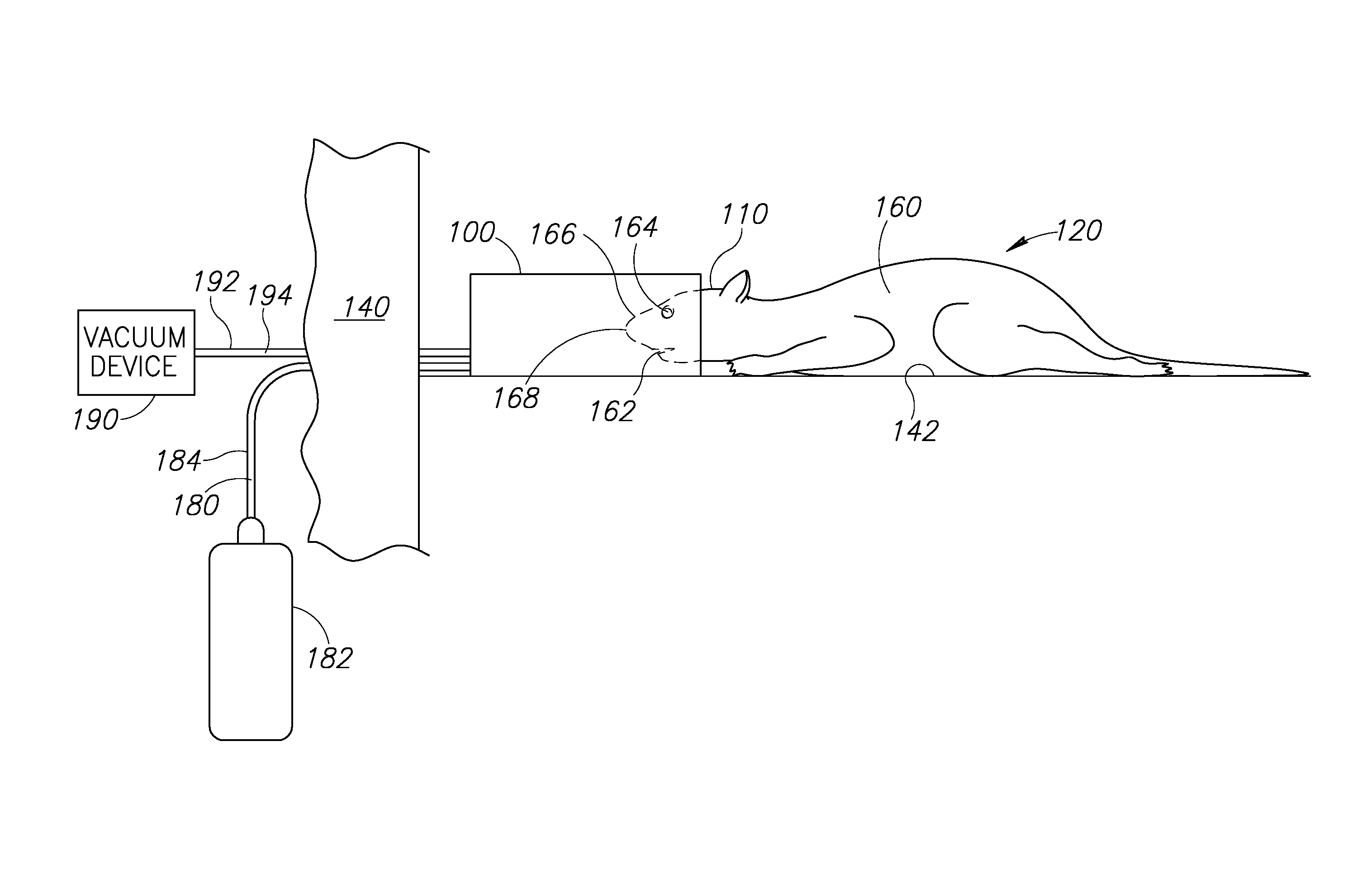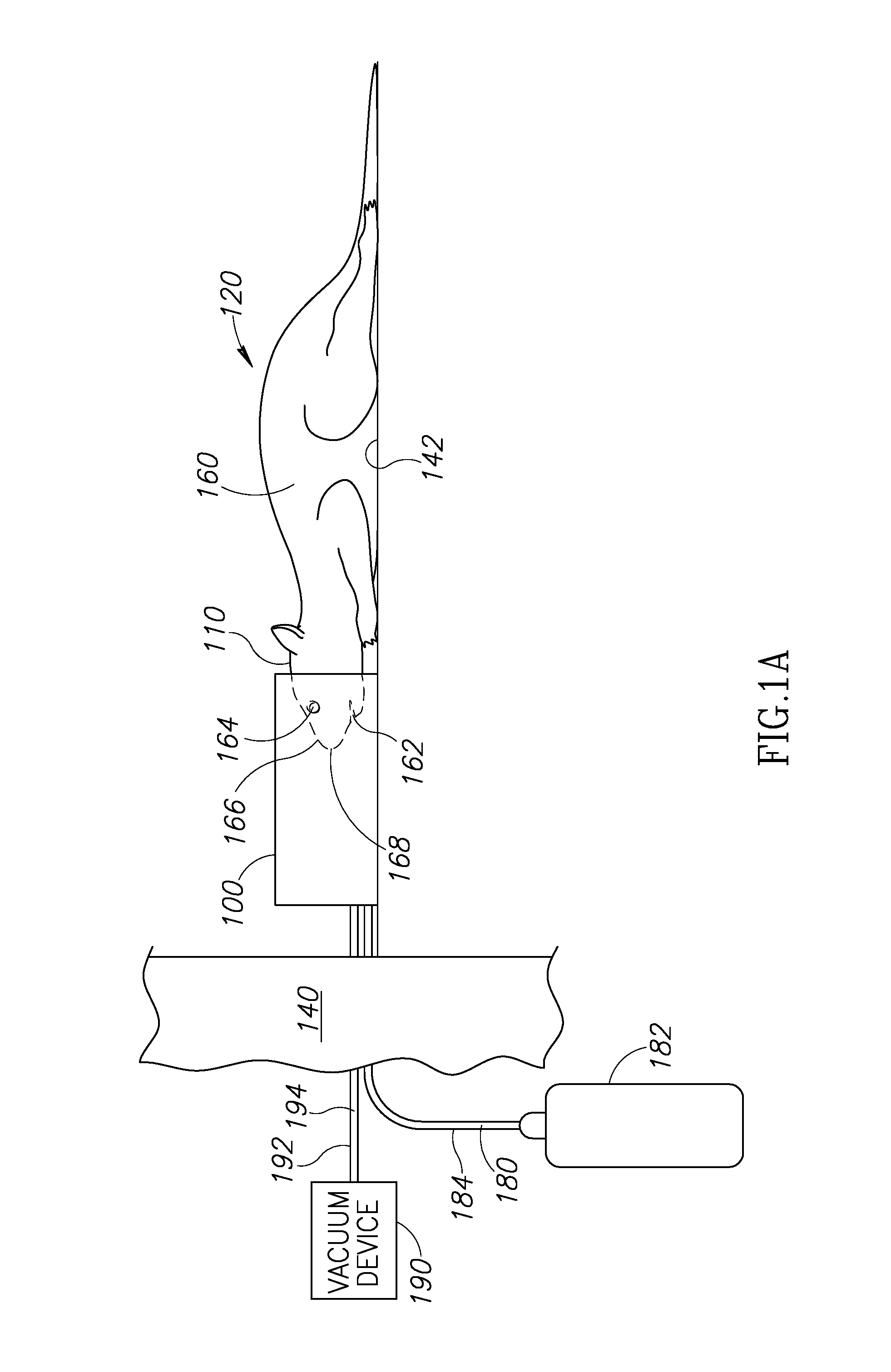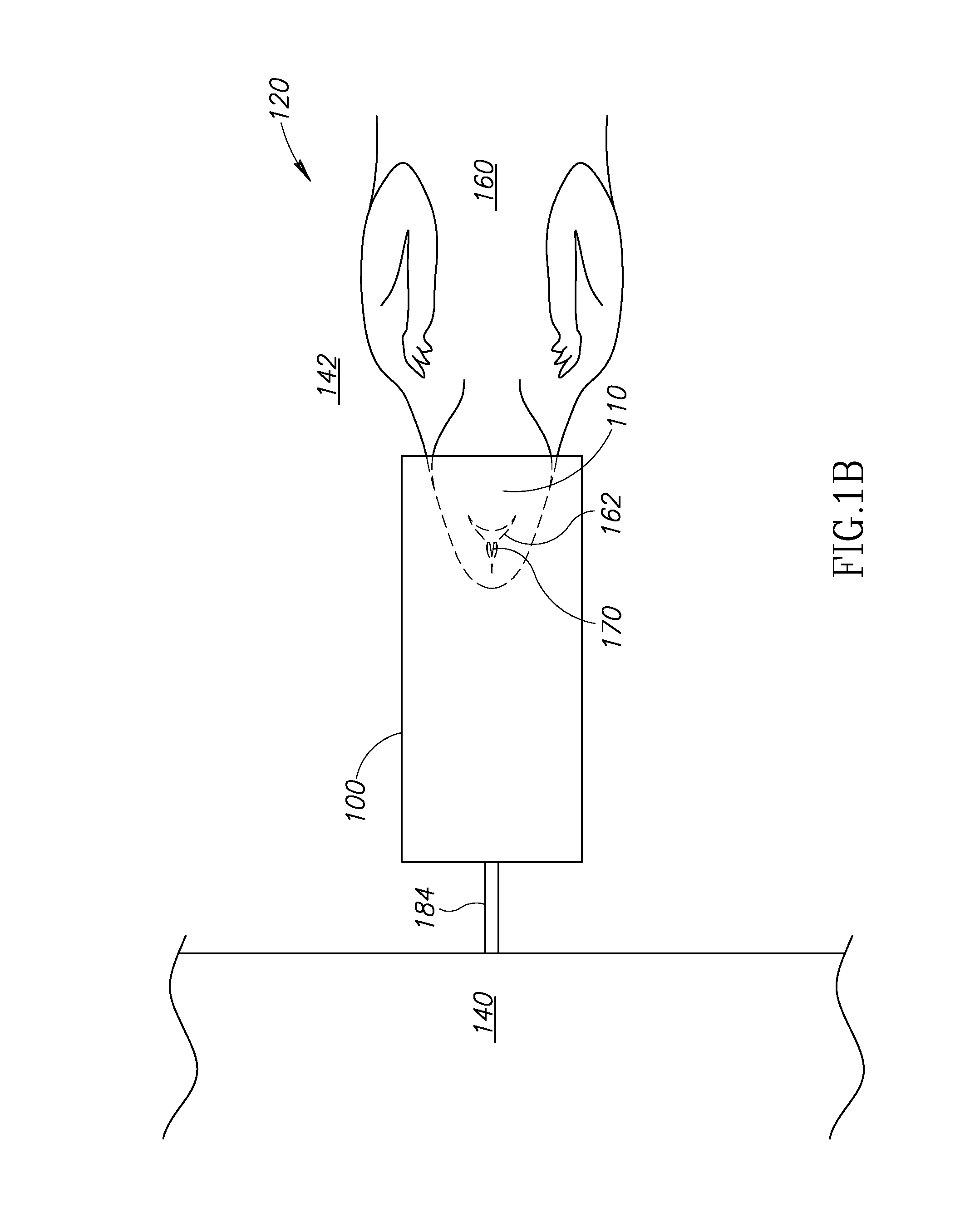Small animal imaging device
a small animal and imaging device technology, applied in the field of masks, can solve the problems of many problems and limitations, masks are too simple to handle dangerous gas(es), and design is only satisfactory for imaging rodents in a prone position
- Summary
- Abstract
- Description
- Claims
- Application Information
AI Technical Summary
Benefits of technology
Problems solved by technology
Method used
Image
Examples
Embodiment Construction
[0021]FIG. 1A is a side view of a Small Animal Imaging Device (“SAID”) 100 shown on a head 110 of an animal 120. In FIGS. 1A and 1B, the SAID 100 is illustrated before the animal 120 is imaged by an imaging device 140. By way of non-limiting examples, the imaging device 140 may be a magnetic resonance imaging (“MRI”) machine, a computerized tomography (“CT”) machine, a positron emission tomography (“PET”) machine, and the like. The imaging device 140 is configured to produce a scan of all or a portion of the animal 120 when the animal 120 is anesthetized. When being imaged by the imaging device 140, the animal 120 is positioned on a bed 142 in a desired imaging position (e.g., prone or supine). In FIG. 1A, the animal 120 is depicted in the prone position. However, this is not a requirement. The animal 120 may alternatively be positioned in a supine position (see FIG. 1B), on its side, and the like. The SAID 100 may be “machine-compatible” meaning the SAID 100 may be configured for u...
PUM
 Login to View More
Login to View More Abstract
Description
Claims
Application Information
 Login to View More
Login to View More - R&D
- Intellectual Property
- Life Sciences
- Materials
- Tech Scout
- Unparalleled Data Quality
- Higher Quality Content
- 60% Fewer Hallucinations
Browse by: Latest US Patents, China's latest patents, Technical Efficacy Thesaurus, Application Domain, Technology Topic, Popular Technical Reports.
© 2025 PatSnap. All rights reserved.Legal|Privacy policy|Modern Slavery Act Transparency Statement|Sitemap|About US| Contact US: help@patsnap.com



